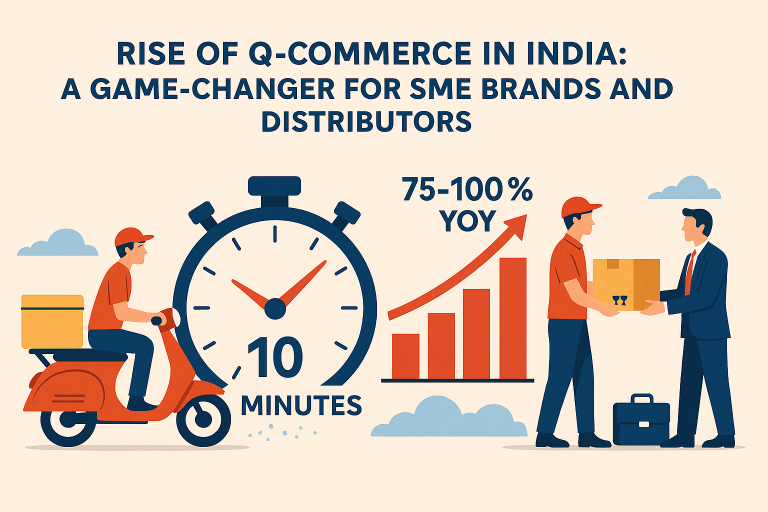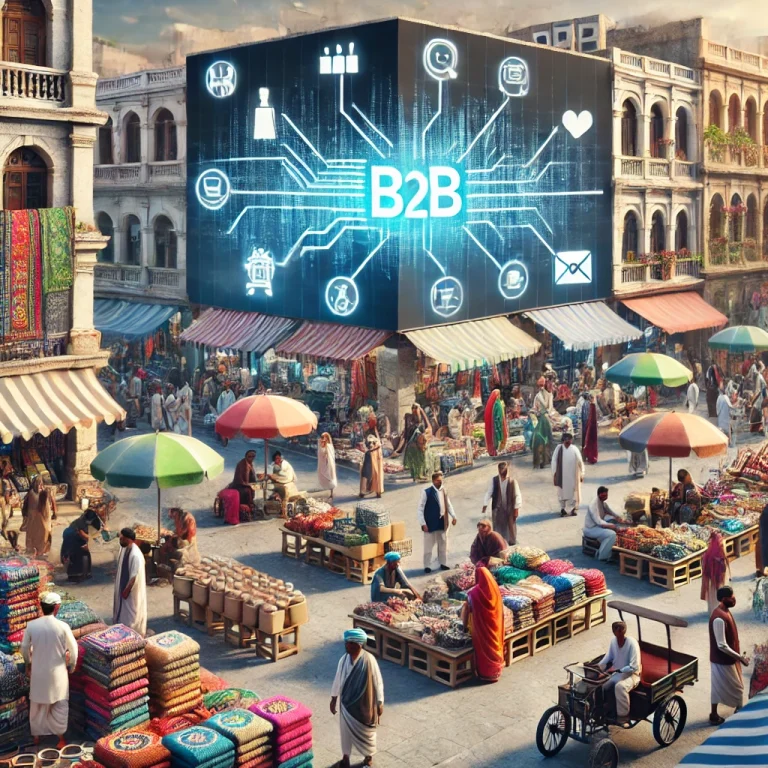Starting a business by selling directly to consumers (B2C) can be a smart move. Platforms like Amazon, Flipkart, and Meesho have made it easier for new entrepreneurs to reach the market and establish their brands. Direct-to-consumer (D2C) strategies, where companies sell their products directly to customers, have also seen great success.
However, there are significant limitations to how far you can grow with a pure B2C model. This blog post explores why expanding into B2B distribution is essential for sustained growth and success in India, especially for small and medium enterprises (SMEs). We’ll provide practical tips, real-world examples, and case studies to help you navigate this critical transition.
The Limitations of B2C
While selling directly to consumers has its advantages, many companies quickly realize that this model alone is not sufficient for large-scale growth. Here are some reasons why:
- Single Item Sales:
- Selling individual items one at a time can be limiting. It’s hard to scale up revenue significantly when you’re focusing on single transactions.
- Delivery Hassles:
- Managing shipping and delivery for thousands of individual orders can be overwhelming. The logistics of packaging, shipping, and handling returns can drain resources and reduce profit margins.
- High Marketing Costs:
- To stand out in the crowded B2C market, you need to invest heavily in advertising and marketing. As you scale, these costs can skyrocket, cutting into your profits.
- Logistics and Warehousing:
- Expanding your operations means you need more storage and better logistics, which translates to higher costs and increased complexity.
The Benefits of B2B Distribution
To overcome these challenges, many growing companies turn to B2B distribution. This involves selling products in bulk to retailers, distributors, dealers, or wholesalers, rather than directly to individual consumers. Here’s why B2B distribution is essential:
- Bulk Sales:
- Selling in bulk means you can move larger volumes of products at once, significantly increasing your sales and revenue without the need for individual transactions.
- Reduced Operational Hassles:
- When you sell in bulk to B2B partners, they handle the logistics, warehousing, and delivery. This reduces your operational burdens and allows you to focus on production and product development.
- Lower Marketing Costs:
- B2B sales often rely on building relationships rather than expensive advertising. Once you establish connections with reliable partners, the ongoing cost of maintaining these relationships is much lower than continuous B2C marketing campaigns.
- Access to Wider Markets:
- Distributors and wholesalers have established networks and deep knowledge of local markets. They can help you reach areas you wouldn’t be able to access on your own.
Navigating the Indian Distribution Landscape
India’s distribution network is the backbone of its market, but it’s also highly fragmented and unorganized. Large corporations and MNCs have built extensive pan-India distribution channels, often leaving SMEs struggling to keep up. Here’s how you can effectively navigate and build your distribution network in India:
- Avoiding High Costs of Direct Expansion:
- Opening sales offices and hiring staff across India can be prohibitively expensive and risky for SMEs. Even big companies like Hindustan Unilever, Nestle, or Maruti Suzuki rely on distribution partners instead of handling all sales directly.
- Leveraging Distribution Partners:
- Distribution partners provide a win-win situation. Manufacturers gain access to larger markets without investing in infrastructure like warehouses or delivery services. In turn, distributors get quality products to sell, which helps them earn more and grow their business.
- Finding Reliable Distribution Partners:
- The key challenge is finding trustworthy and capable distribution partners. You need partners with the right experience, network, and investment capacity.
Case Study: Leveraging B2B for Growth
Consider the journey of an SME that started as a small home appliance manufacturer. Initially, they sold directly to consumers through their own website and on platforms like Amazon. However, they soon faced challenges in scaling up due to high marketing costs and logistics issues.
By shifting their focus to B2B distribution, they started partnering with regional distributors who had deep connections with local retailers. Here’s what they did:
- Identified Target Markets:
- They researched and identified regions with high demand for their products but low competition.
- Found Local Partners:
- Using platforms like Vanik, they connected with distributors who had a strong presence in these target markets.
- Built Relationships:
- They invested time in building trust with their partners, offering training and support to ensure successful product placement.
- Achieved Scale:
- With their partners handling sales and distribution, the company was able to focus on product innovation and expand into new regions without the burden of logistical issues.
Tips for SMEs Looking to Expand into B2B Distribution
- Do Your Homework:
- Before reaching out to potential distributors, gather as much information as possible about their business, including sales performance, market reach, and investment capacity.
- Prepare Thoroughly:
- Be ready with all the necessary information about your product, including packaging, pricing, and marketing materials. A well-prepared presentation can make a significant difference.
- Build Strong Relationships:
- Focus on building long-term relationships with your distribution partners. This involves clear communication, trust, and mutual respect.
- Be Persistent:
- Don’t be discouraged if you don’t get immediate responses. Follow up regularly and stay engaged with your potential partners.
- Highlight Your Unique Value:
- Clearly communicate what makes your product unique and how it benefits the consumer. This can help you stand out in a crowded market.
- Leverage Technology:
- Use online platforms and tools to find and connect with potential distributors. This can save time and provide valuable insights into the market.
Conclusion
Expanding from B2C to B2B distribution is a critical step for SMEs aiming for long-term success in India. While B2C sales can provide a solid start, the real growth comes from building a robust network of distribution partners who can help you reach larger markets and scale efficiently.
By understanding the complexities of the Indian distribution landscape and following these practical tips, SMEs can overcome challenges and create a successful B2B strategy that drives sustained growth.
For more information on finding and connecting with distributors, check out Vanik and watch the YouTube video “How I Built a 50 Crore FMCG Brand in 5 Years” for inspiration and guidance.
Feel free to reach out if you need further assistance or have any questions about building your distribution network. We’re here to help you succeed!

